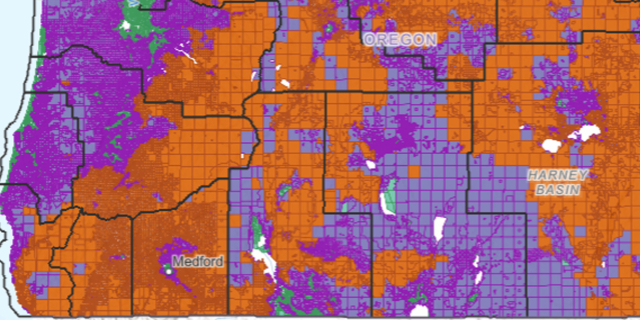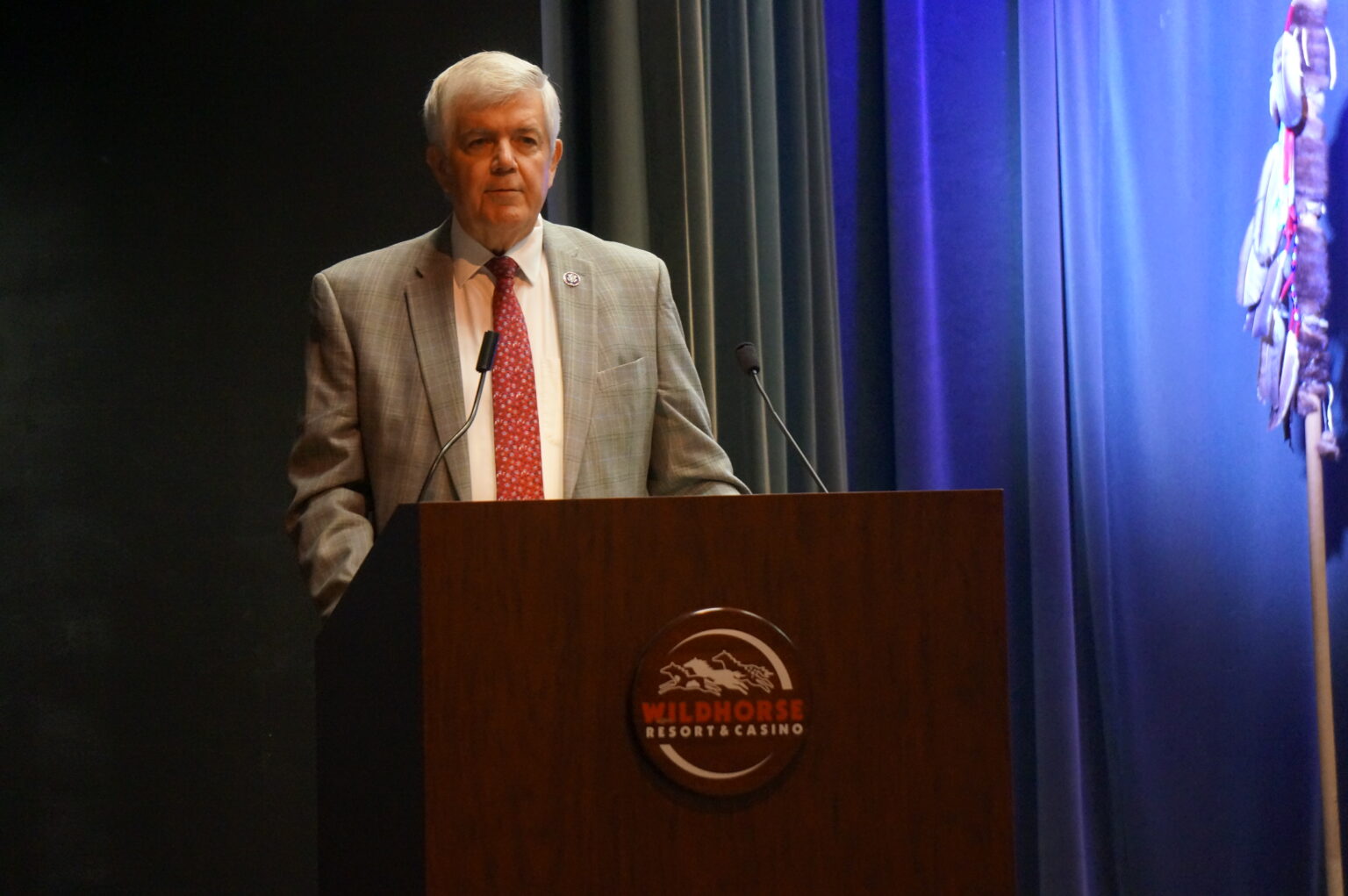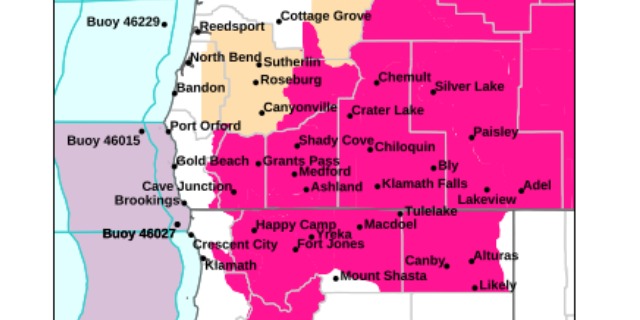Controversial Oregon wildfire map might be swapped for voluntary incentives
Published 2:00 pm Sunday, April 13, 2025

- Screenshot of the wildfire hazard map in southwestern Oregon. Green represents low hazard classification, purple is moderate and orange is high.
A contentious Oregon wildfire map that imposed new regulations on high-risk landowners may be swapped for incentives meant to promote home hardening and defensible space.
The Senate Natural Resources Committee has unanimously voted to scrap the state’s wildfire hazard map, originally approved in 2021, as well as the enhanced building code standards and other requirements it entailed.
Repealing the wildfire map involved a “difficult conversation” but it’s proven necessary, not only because the provisions were deeply unpopular but because they were impractical, said Sen. Jeff Golden, D-Ashland, the committee’s chair.
Trending
“I’m grateful for the consensus that has developed this session,” he said during a recent legislative hearing.
Senate Bill 83, which is now headed for a vote on the Senate floor, would eliminate the map and instead allow local governments to adopt model building codes intended to increase fire resilience.
The committee has also unanimously passed another wildfire proposal, Senate Bill 85, to foster cooperation between state agencies and the insurance industry to eventually lower homeowner premiums if they mitigate risks.
The map was meant to improve the ability of homes in high hazard areas to withstand wildfires, but affected landowners revolted against the stricter building codes it required in certain regions.
Requirements to clear vegetation around dwellings were also criticized, with farmers fearing that orchards and other permanent crops would be affected.
Lawmakers are accustomed to having new laws opposed by segments of the public, so that’s not the only reason they decided to overturn the wildfire map regulations, Golden said.
Trending
In the end, the map wasn’t feasible because the hazard ratings and associated regulations were based entirely on landscape characteristics over which landowners had no control, he said.
“The problem is they were unworkable,” Golden said.
The map was described in even harsher terms by some Republican lawmakers, such as Rep. Bobby Levy, R-Echo, who said the “heavy-handed mandates” would have “punished responsible landowners” and were developed “without meaningful local input or transparency.”
The replacement regulations proposed under SB 83 are a “necessary course correction” that would strengthen Oregon’s wildfire prevention strategies, she said. “It does so without relying on a one-size-fits-all, top-down system.”
Under the other piece of wildfire legislation, SB 85, the Department of the State Fire Marshal, Department of Consumer and Business Services and Department of Forestry would consult with insurance industry representatives on actions to improve fire resilience that would make insurance more affordable.
“We’d rather have carrots than sticks. That’s a funding issue,” Golden said. “If we want to have incentives, we have to agree as a body to fund them.”
The proposal recognizes that insurance companies “are the ones who have the carrots,” Golden said. “They can incentivize the work much better than we can.”
The bill would encourage cooperation between the state government and insurance companies without going so far as requiring discounts for certain practices.
“If we were to try doing that right now, we would likely experience insurers leaving our marketplace,” said Andrew Stolfi, the state’s insurance commissioner.
State agencies would instead be directed to work with the insurance industry to make discounts and incentives possible as certain actions are statistically proven to reduce susceptibility to wildfire, he said.
“It is intended to keep pushing the science forward so we can all better understand the connections between risk mitigation and insurance underwriting and rating,” Stolfi said. “It does take a slate of actions at the property level to make a meaningful impact for the survivability of that property.”
To protect against wildfire, homeowners must not only fortify their own dwellings but work with surrounding landowners to shore up vulnerabilities in their community, he said. “It does matter what your neighbor has done.”








